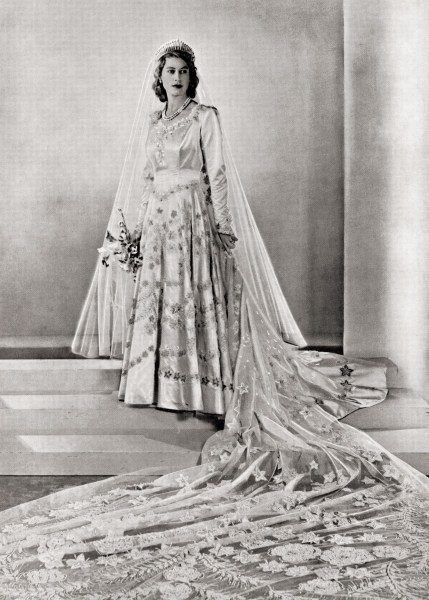Contents
- 1 Women’s Trends of the 1940s
- 2
- 3 The Rise of the Utility Suit
- 4 Shirtwaist Dresses Reigned
- 5
- 6 Hats Shrunk, Shoes Grew
- 7
- 8 The Rise of American Designers
- 9
- 10
- 11 Hollywood Set Trends
- 12
- 13 The Return of Paris Postwar
- 14
- 15 The New Look Changed It All
- 16
- 17 The Bikini Arrives
- 18
- 19 Top Designers of the Era
- 20 Men’s Trends of the 1940s
- 21
- 22 In the Culture

The prevailing styles of 1940s fashion? Well, that depends. Stylistically, the decade began with one look (fueled by wartime make-do-and-mend attitudes) and ended with an entirely other New Look (a chic-for-chic’s-sake celebration).
Of the former, this somber excerpt from Vogue’s February 1, 1943, issue encapsulates the mood around consumption in the early decade: “By the time this issue of Vogue appears, a new type of currency will be coming into circulation in the United States. Not plastic pennies or a new series of banknotes, but rationing stamps.”
Throughout World War II’s six-year span and several years beyond, various measures were taken to conserve resources and ration clothing to better equip the war efforts and recovery throughout Europe. In Paris, especially during the German Occupation, the couture industry was tightly regulated. In Great Britain, extreme wartime and postwar rations were imposed on textiles and leather goods, whereas in the US fabrics were a little less scarce due to domestic cotton production. The biggest trend at the start of the 1940s was utility dressing. It was not just a descriptor of fashion void of frivolous details; it became its own category of clothing. In Great Britain, the government launched a Utility Clothing Scheme known as CC41, enlisting top designers of the moment, like Hardy Amies, Digby Morton, Charles Frederick Worth, and Edward Molyneux, to design a capsule collection following the restrictions on fashion.
Following the liberation of Paris, French designers took back the helms of fashion and steered the decade in a new direction. Once Christian Dior in 1947 showcased an unabashed use of textiles in a wasp-waisted feminine silhouette that recalled the 18th century, the era’s practicality was forgotten. Fashion is a gorgeously fickle thing.

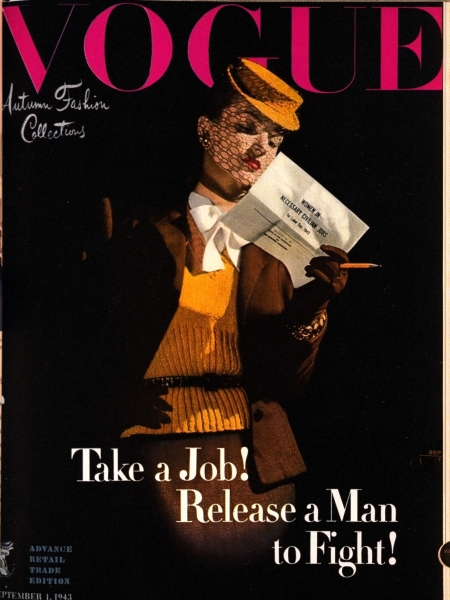
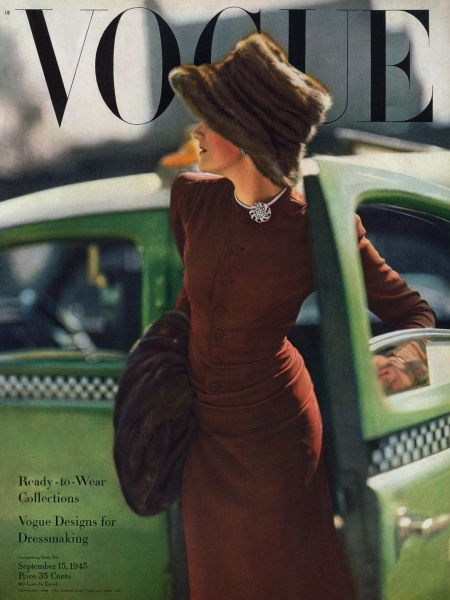
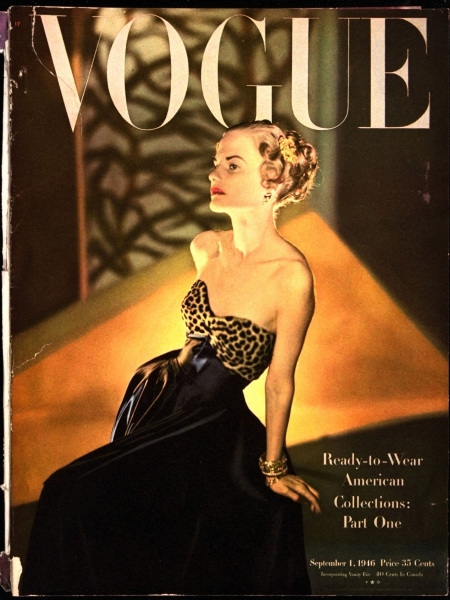
Women’s Trends of the 1940s
The Rise of the Utility Suit
Menswear-Inspired Skirt Suits for Women
By the start of the war, the bias-cut satins and chiffons dominating 1930s fashion were quickly phased out; silk and even artificial silk were largely reserved for the war efforts. Instead, practical fashion was dominated by little waste required in its production, epitomized by the rise of the woolen skirt suits for women.
While the skirt suit was not a novel fashion item, the stark, menswear-inspired tailoring was. The overall silhouette was narrow and slim: Shoulders were accentuated but not exaggerated, and waists were slightly nipped. Adornments came in the form of military elements like belts and breast pockets.
The look was ubiquitous. Vogue announced the “Uniform of 1942” as the “Tailored Suit” in its January 15, 1942, issue. “A suit to work in, serve in, live in, all through the busy daylight hours of your new double-duty life,” it explained.
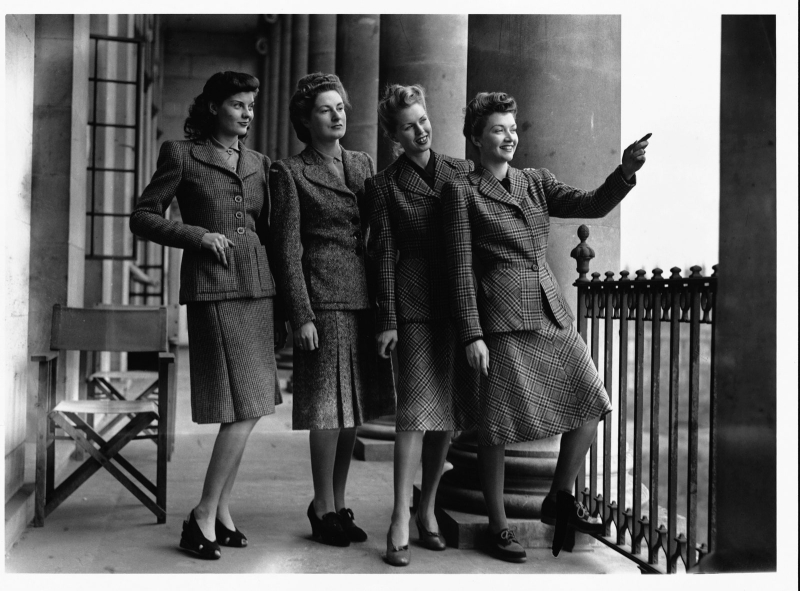
Shirtwaist Dresses Reigned
Dubbed the Kitty Foyle Dress
Before the New Look, if there was one silhouette that ruled the 1940s, it was the knee-length shirtwaist dress—specifically one with a contrasting collar and caps on the sleeves. A version of this dress was worn by Ginger Rogers in the film Kitty Foyle, and it has since been dubbed the Kitty Foyle dress.
Aesthetically, the shirtwaist offered bang for your buck: Its simple A-line skirt required little volume but still looked polished, and the collar added visual interest without much extra material. It was prim without looking overly fussy—essentially a practical dress that wasn’t at odds with the sobering times. Plus, it was the style championed by American and British authorities.
In an article titled “Shirtwaist Revival” in Vogue’s March 15, 1943, issue, the copy reads: “The shirtwaist look is a right look for this spring. W.P.B. likes it—so will you.” (The W.P.B. being the War Production Board established by President Franklin D. Roosevelt in January 1942 following Pearl Harbor.)
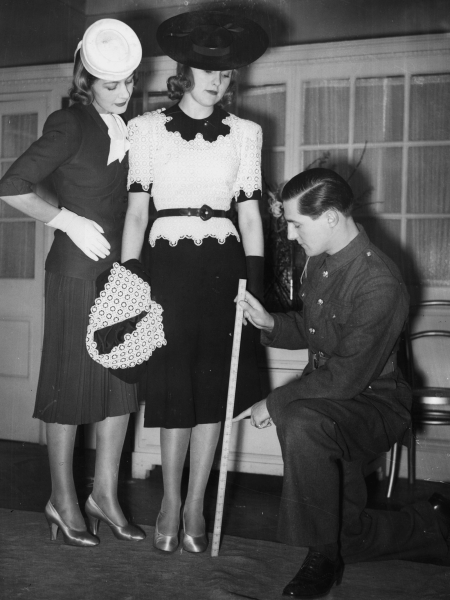
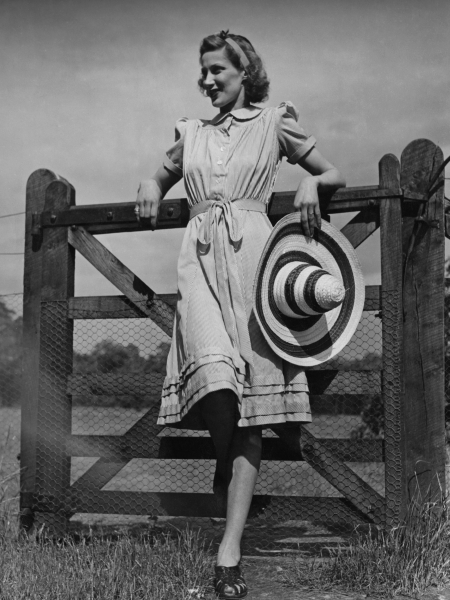
Hats Shrunk, Shoes Grew
Accessories Got Inventive
A scarcity of traditional fashion fabrics during the war meant designers and at-home sewers needed to get scrappy. At the time, hats, still a somewhat mandatory accouterment for a woman, shrunk in size. They were worn askew at an angle and crafted from a variety of materials, from felt to straw. Snoods and turbans also fell into fashion, prized for their practicality—they kept women’s hair out of the way in factories and looked superb with a dress.
Shoes were sturdy: Toes were rounded, and heels were substantial. Leather was in short supply, and thus alternative materials came into fashion, like cork and espadrilles. Vogue’s January 1, 1944, issue touted “Unrationed Raffia Shoes” that were “Footloose and Ration-free.”
Unexpected materials continued to proliferate in fashion; in 1947 Guccio Gucci famously gave us the curved bamboo-handle bag.
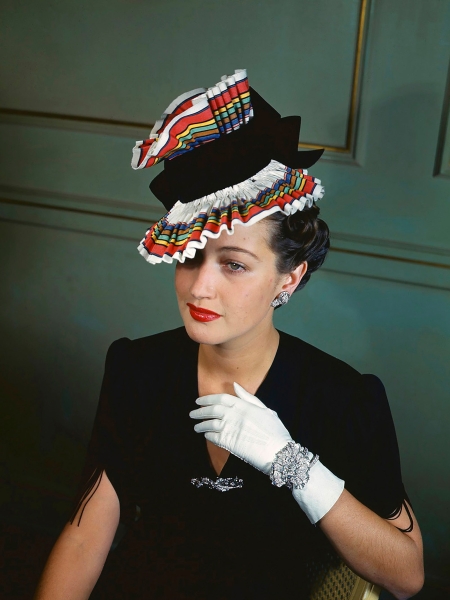
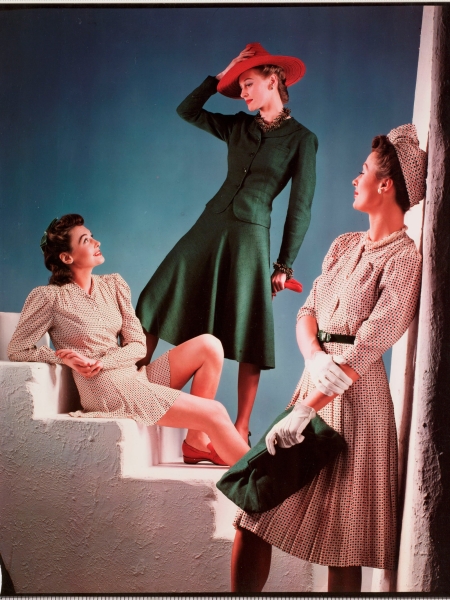
The Rise of American Designers
New York Was Put on the Fashion Map
In a few lines, the February 1, 1941, issue of Vogue captures the state of fashion succinctly:
“Since the fall of Paris, the influence of many of the last great French Collections which we saw has hung on. But in the past seven months, American designers—clothes, fabric, shoes, hat, jewelry designers—have come far; learned much; caught their breath; recovered a little from their first nervousness, their first protestations that ‘we aren’t afraid of the dark’.… Though we continue to import British designs from Molyneux and Creed and others, the most recent developments in fashion have stemmed from our own imaginations.”
Without Paris, the US looked inward for fashion direction. Designers like Norman Norell, Bonnie Cashin, Tom Brigance, Rudi Gernreich, Gilbert Adrian, and Claire McCardell rose in profile. McCardell’s pivotal “Pop-over” dress, which was originally introduced as a $7 Utility garment in 1940, marked the beginning of American sportswear: easy, practical, yet uncompromisingly stylish.
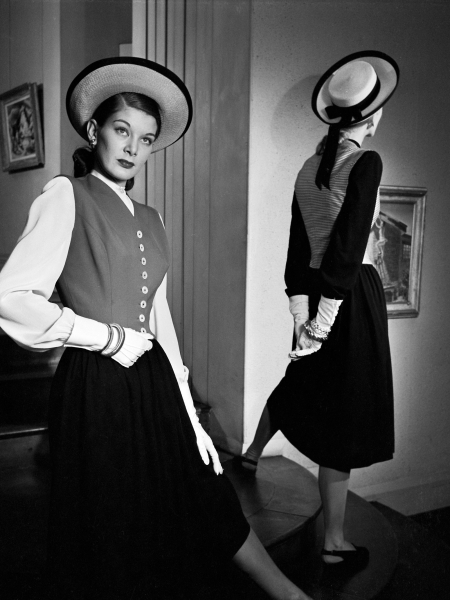
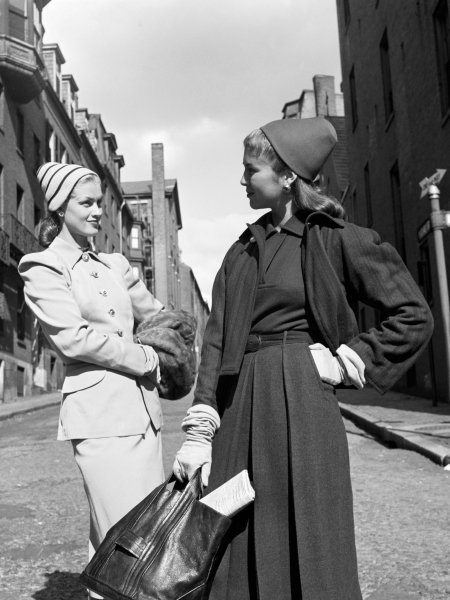
Hollywood Set Trends
And Katharine Hepburn Wore the Pants
Throughout the 1940s, Hollywood pictures offered as much fashion to feast on as a magazine. Films like A Philadelphia Story, Gilda, and The Big Sleep gave us screen sirens who wore clothes with more command than your average mannequin. Actors like Rita Hayworth, Veronica Lake, Lauren Bacall, and Ingrid Bergman were outfitted by the likes of costume designers such as Gilbert Adrian, Edith Head, Orry-Kelly, and Jean Louis, and their collaborations went down in fashion history—perhaps no one more so than Katharine Hepburn, who boldly wore a tuxedo in Woman of the Year in 1942 (costumed by Adrian Adolph Greenberg) and made strides for women while doing so.
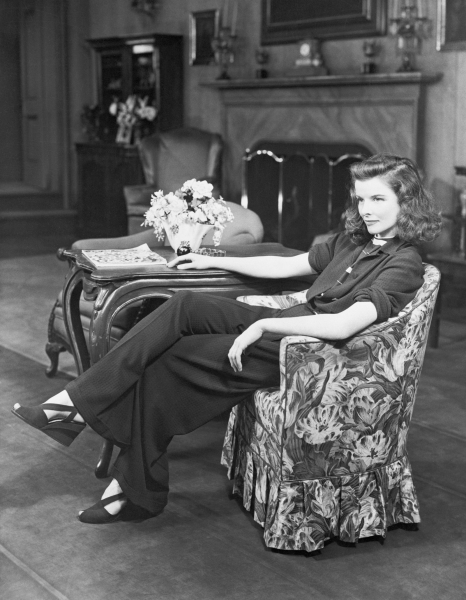
The Return of Paris Postwar
All about Théâtre de la Mode
As Parisian fashion existed in a Nazi-sealed vacuum during the German Occupation of Paris, upon liberation Parisian fashion designers were eager to reclaim their voice and announce to the world that they were back and ready to dress it. With resources in short supply, Lucien Lelong, then president of the Chambre Syndicale de la Couture Parisienne, banded together 40 couturiers (Balenciaga, Schiaparelli, Paquin, Jean Patou, Hermès, Madame Grès, and Nina Ricci among them) for a collaborative fashion show of dolls (smaller bodies meant less fabric!) that would travel the world. The show, “Théâtre de la Mode”, was a love letter to Paris, from Paris, and gave the cities it traveled to—Barcelona, London, Leeds, Copenhagen, Stockholm, Vienna, New York, and San Francisco—a preview of postwar fashion.

The New Look Changed It All
Dior’s 1947 Collection Heard Round the World
Christian Dior is credited for the seismic shift in fashion’s postwar look. During the war, Dior was under the employ of Lucien Lelong, but by 1946 he had branched out and founded his own label. For his debut collection, spring 1947, he showcased clothing that ran counter to the prevailing fashion of the moment. His skirts were overflowing with yardage, his shoulders were sculpted like a second skin, and practicality was discarded for unabashed loveliness. Dubbed “the New Look” by Harper’s Bazaar editor Carmel Snow, the collection was actually called the Corolle line, and its most famous piece is the Bar Suit. Was it new? Today the collection, perhaps one of fashion history’s most famous, is described by fashion historians as exaggerating an existing silhouette and promoting a look that was the antithesis of what American and British designers championed during the war.
The look informed the direction of fashion for years to come (the 1950s silhouette is really Dior’s 1947 silhouette), but it was not without backlash.
Later that fall, Texan Mrs. William J. Woodward formed the Little-Above-the-Knee Club to protest Dior’s “wasteful” skirt styles. However, Woodward was in the extreme minority. Women were soon swathing themselves in Dior and Dior-esque designs, ready to shed wartime austerity and take in the booming 1950s.
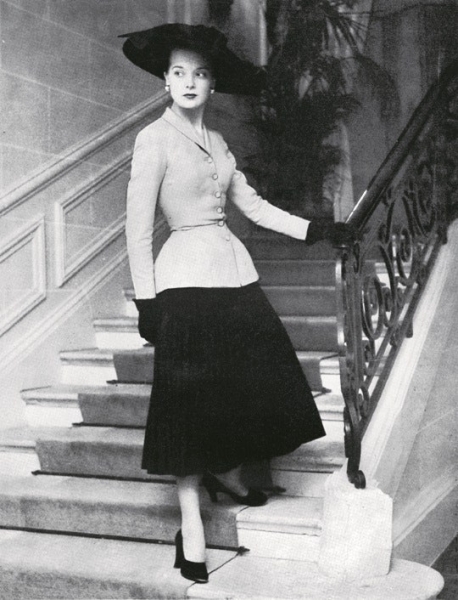
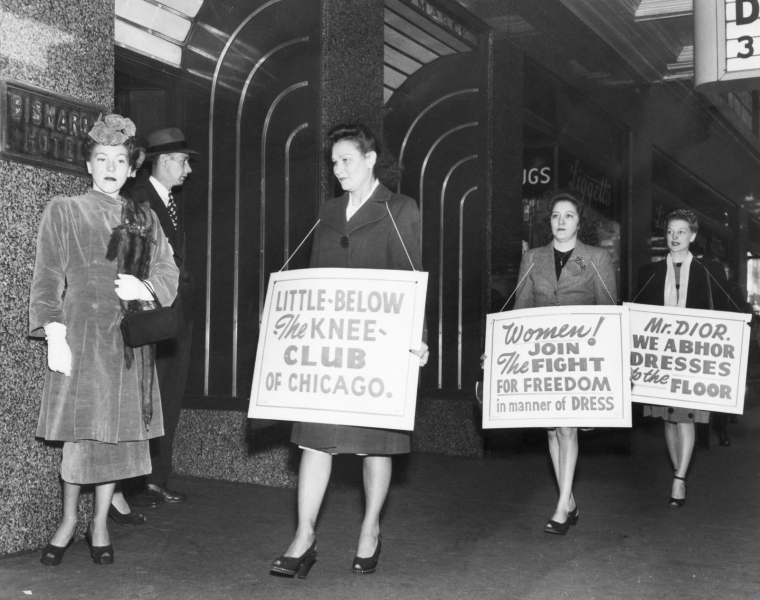
The Bikini Arrives
Louis Réard and Jacques Heim Race Toward the Two-Piece
Named after the Bikini Atoll, among the Marshall Islands where the US tested its nuclear bomb, the bikini involved a bit of a war—between two designers, Louis Réard and Jacques Heim.
In May 1946, Heim advertised the world’s “smallest bathing suit,” dubbing the two-piece swimsuit the “Atome” (as in, tiny!). But Réard would follow that up with a string bikini three weeks later that he dubbed the “Bikini” as it would be more explosive than the just-dropped atomic bomb in Bikini Atoll.
Réard’s bikini (which revealed the naval of the wearer—taboo at the time) was launched on July 5, 1946, at Piscine Molitor, a public pool in Paris, and worn by Micheline Bernardini. As the story goes, none of the fashion models dared to bare that much, so the resourceful Réard hired a 19-year-old nude dancer from the Casino de Paris to sport the tiny suit. Though it caused a splash, it would take a decade before the suit could shake its scandalousness.
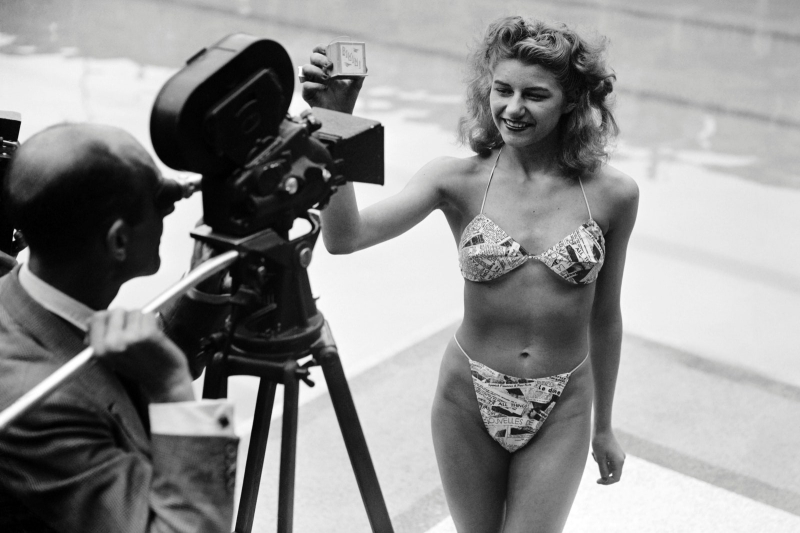
Top Designers of the Era
Christian Dior, Claire McCardell, Bonnie Cashin, Brigance, Rudi Gernreich, Hardy Amies, Norman Hartnell, Edward Molyneux, Elsa Schiaparellli, Digby Morton, Creed, Charles James, Mainbocher, Lucien Lelong, Paquin, Jeanne Lanvin, Worth, Pierre Balmain, Marcel Rochas, Nina Ricci, Jacques Fath, Balenciaga, Madame Grès, Hattie Carnegie, Adrian, Pauline Trigère, Norman Norrell, Nettie Rosenstein, Vera Maxwell
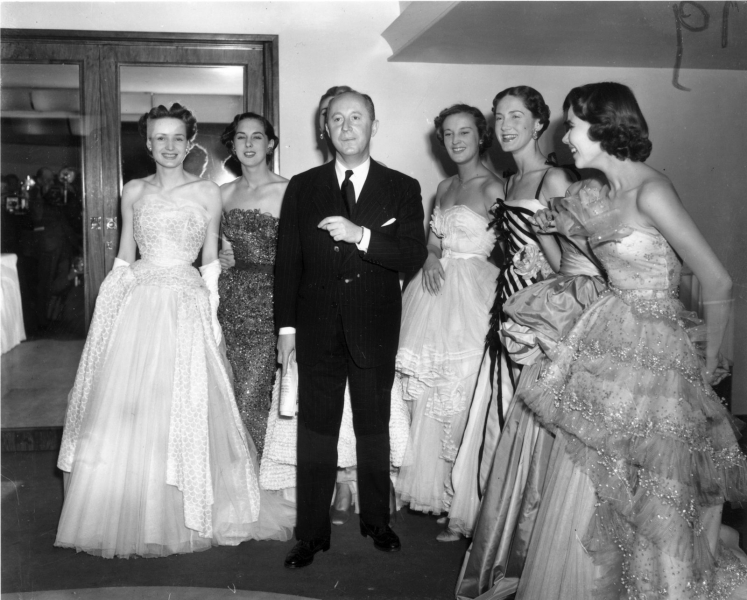
Men’s Trends of the 1940s
During the start of the 1940s, men’s suits followed the trend of slim fits (the product of clothing rations). Double-breasted suits popular during the 1920s and 1930s became single-breasted, and the waistcoat was all but abolished, seen as an unnecessary element. Turn-ups on the hems of pants were also 86’d under certain rationing protocols.
In the summer of 1943, extreme attention was paid to the zoot suit, which controversially billowed with excess fabric. With roots in the drape suits seen on Harlem stages in the 1930s to accentuate performers’ movements, the suit style became popular with Black, Mexican American, and Latino men who found tailors to take in oversized suits to their frames. As the style was at odds with the prevailing less-is-more tailoring, it became a fashion for the counterculture, but it was not celebrated by all. In Los Angeles in July 1943, the look fueled racial tensions between white sailors, marines, law enforcement, and zoot-suit wearers that culminated in a week of violent riots, the Zoot Suit Riots.
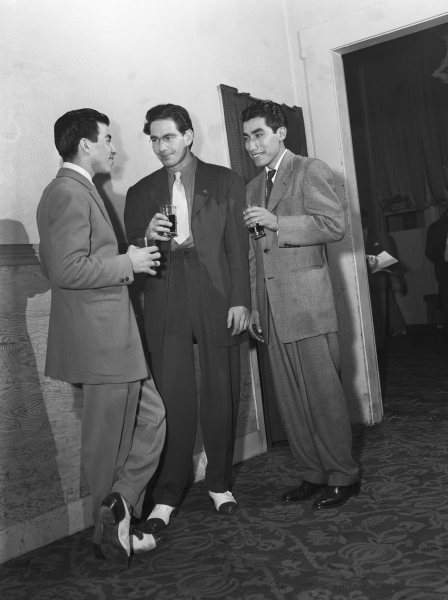
In the Culture
Though the film came out in 1939, it was in February 1940 that Hattie McDaniel made history by winning the Academy Award for best supporting actress and becoming the first Black actor to win an Oscar. In the music scene, Frank Sinatra, Bing Crosby, and Nat King Cole dominated the charts with their jazz and swing hits. On November 20, 1947, Princess Elizabeth of Great Britain married Lieutenant Philip Mountbatten in a Norman Hartnell wedding dress. In 1948 the Academy Awards introduced an award for best costume design, underscoring the role of fashion onscreen.
